 Get premium membership
Get premium membership and access revision papers with marking schemes, video lessons and live classes.
Form 2 Biology End of Term 3 Examination 2022
Class: Form 2
Subject: Biology
Level: High School
Exam Category: Form 2 End Term 3 Exams
Document Type: Pdf
Views: 1076
Downloads: 51
Exam Summary
TERM 3-2022
BIOLOGY PAPER (QUESTION PAPER)
FORM TWO (2)
TIME 2HOURS
Name………………………………………………………………Adm No…………………………………
School……………………………………………………………………Class………………………………
Signature…………………………………………………………Date…………………………………………
INSTRUCTIONS
Write your answers correctly and clearly in the spaces provided
Be keen on Spelling of Technical Terms
1. Name the branch of Biology that deals with the study of the following:
a) Classification of living organisms (1mk)
.............................................................................................................................................................
b) Internal structure of an organism (1mk)
…………………………………………………………………………………………………………………………..
2. Explain why an insectneeds to undertake gaseous exchange
……………………………………………………………………………………………………………………………………………………………………………………………………………………………………………………………………………………………………………………………………………………………………………………………………………………………………………………………………………………………………………………(2mks)
3. Identify and state the function of each of the following apparatus (4mks)
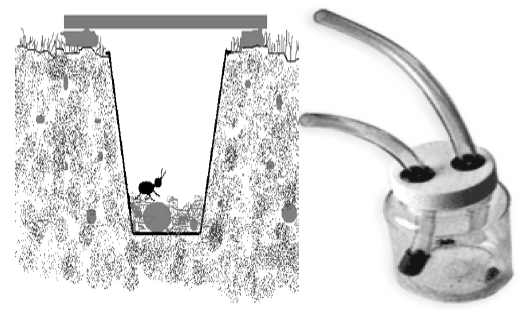
4. a) Write down the formula for calculating magnification when using a light microscope to observe specimen (1mk)
………………………………………………………………………………………………………………………………………………………………………………………………………………………………………………………………
b) Sam drew the rear leg of a grasshopper which measured 45mm on the insect. If he used a magnification of X0.5, calculate the length of the leg drawn in centimeters. (3mks)
………………………………………………………………………………………………………………………………………………………………………………………………………………………………………………………………………………………………………………………………………………………………………………………………………………………………………………………………………………………………………………………………
5. Use the diagram shown to answer the questions that follow
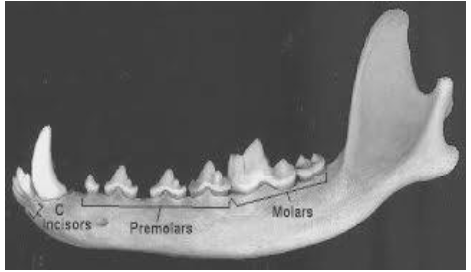
a) Name the mode of feeding for the animal whose lower jaw is shown above (1mk)
………………………………………………………………………………………………………………..
b) Give TWO reasons for your answer in a) above (2mks)
……………………………………………………………………………………………………………………………………………………………………………………………………………………………………………………
6. Account for the following observations
a) A mountain climber has more red blood cells than a person of the same size, age and gender living in low lands (2mks)
……………………………………………………………………………………………………………………………………………………………………………………………………………………………………………………………………………………………………………………………………………………………………………….
b) A baby has higher energy requirement than an adult (2mks)
………………………………………………………………………………………………………………………………………………………………………………………………………………………………………………………………………………………………………………………………………………………………………………
7. The diagram shown below is of a structure found in cells
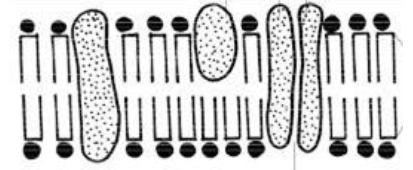
a) Label the following parts: Phospholipid layer; a pore (2mks)
b) State TWO properties of the structure above (2mks)
………………………………………………………………………………………………………………………………………………………………………………………………………………………………………………………………………………………………………………………………………………………………………………………………
8. a) Define the term ‘active transport’ (1mk)
………………………………………………………………………………………………………………………………………………………………………………………………………………………………………………………………………………………………………………………………………………………………………………………………
c) Give TWO ways in which active transport and diffusion are different
…………………………………………………………………………………………………………………………………………………………………………………………………………………………………………………………………………………………………………………………………………………………………….(2mks)
9. State the economic importance of the following excretory products from plants (3mks)
a) Papain: ……………………………………………………………………………………………………….
b) Quinine: ……………………………………………………………………………………………………...
c) Colchicine: ………………………………………………………………………………………………….
10. The following diagram is a cross section of a dicot plant
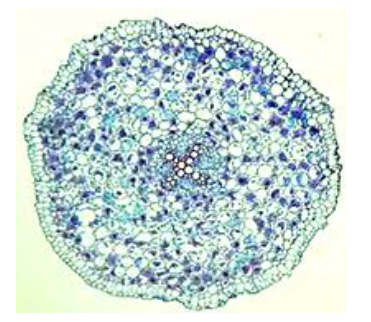
a) From which organ of the plant was the cross section above obtained?
…………………………………………………………………………………………,,,,,,,,……,…………(1mk)
b) Give a reason for your answer in a) above (1mk)
…………………………………………………………………………………………………………………………
11. a) How is large surface area achieved in red blood cells in order to enable them beefficient at their function. (2mks
…………………………………………………………………………………………………………………………………………………………………………………………………………………………………………………………………………………………………………………………………………………………………………………………….
b) Give TWO advantages of Carbon (IV) Oxide transportation by the red blood cells (2mks
………………………………………………………………………………………………………………………………………………………………………………………………………………………………………………………………………………………………………………………………………………………………………………………………
12. Distinguish between the following terms:
i) Allograft and isografts (2mks
………………………………………………………………………………………………………………………………………………………………………………………………………………………………………………………………………………………………………………………………………………………………
ii) Guttation and Transpiration (2mks
…………………………………………………………………………………………………………………………………………………………………………………………………………………………………………
13. a) Explain how the following antibodies defend the body against pathogens
i)Lysins…………………………………………………………………………………………………………………………………………………………………………………………………………………………………(1mk
ii)Agglutinins………………………………………………………………………………………………………………………………………………………………………………………………………………………(1mk
b) Which other way do White Blood Cells defend the body against pathogens in addition to use of antibodies?
……………………………………………………………………………………………………………………………………………………………………………………………………………………………………………1mk
14. a) What is the role of proximal convoluted tubule in the kidney? (1mk
………………………………………………………………………………………………………………………………………………………………………………………………………………………………………………………………
b) Give TWO adaptations of proximal convoluted tubule to its function
……………………………………………………………………………………………………………………………………………………………………………………………………………………………………………………………………………………………………………………………………………………………..………(2mks
15. Name the organelles that form the following: (2mks
i) Ribosomes …………………………………………………………………………………………….
ii) Lysosomes: …………………………………………………………………………………………..
16. State THREE structural differences between arteries and veins (3mks
………………………………………………………………………………………………………………………………………………………………………………………………………………………………………………………………………………………………………………………………………………………………………………………………………………………………………………………………………………………………………………………………
17. Study the diagram shown below
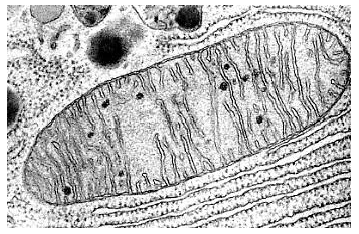
a) State the adaptation of the organelle shown above to its function
…………………………………………………………………………………………………………………………………………………………………………………………………………………………………………...(1mk
b) Name TWO products from the process that takes place in the organelle shown above which are useful in the physiological process that occurs in the chloroplast of plant cells (2mks
……………………………………………………………………………………………………………………………………………………………………………………………………………………………………………………………………………………………………………………………………………………………………………..
c) Why do Red Blood Cells lack the organelle shown above? (1mk
…………………………………………………………………………………………………………………………………………………………………………………………………………………………………………
18. a) What is an enzyme? (1mk
………………………………………………………………………………………………………………………………………………………………………………………………………………………………………………...,…………..
b) Give THREE factors that increase rate of enzymatic reactions (3mks
……………………………………………………………………………………………………………………………………………………………………………………………………………………………………………………………………………………………………………………………………………………………………………………………..
19. The table below shows the number of various teeth in the jaws of an animal

a) Determine the total number of teeth the animal has (1mk
……………………………………………………………………………………………………………………........
b) Write down the dental formula of the animal whose teeth are shown on the table above (1mk
……………………………………………………………………………………………………………………………………………………………………………………………………………………………………………………………………………………………………………………………………………………………………………..
c) With a reason, determine the mode of feeding of the animal represented above (2mks
Mode of Feeding………………………………………………………………………………………… Reason………………………………………………………………………………………………………….……………………………………………………………………………………………………………………………
20. a) Label the following parts of the light microscope on the diagram shown below (4mks
Coarse Adjustment Knob; Revolving Nose Piece; Mirror; Objective lens
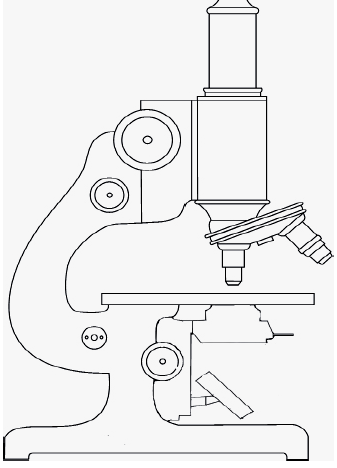
b)State TWO precautions observed before storage of the light microscope
………………………………………………………………………………………………………………………………………………………………………………………………………………………………………………………………………………………………………………………………………………………………………………………(2mks
21. Consider the following experimental set up used to investigate a physiological process
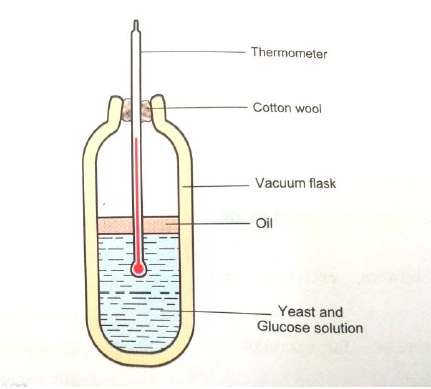
a) What was the aim of the experiment? (1mk
…………………………………………………………………………………………………………………….
b) Account for the change that will take place in the thermometer (2mks
……………………………………………………………………………………………………………………………………………………………………………………………………………………………………………………
c) Suggest a control for the experiment shown above (1mk
……………………………………………………………………………………………………………………………………………………………………………………………………………………………………………………
22. Consider the following equation of a chemical equation
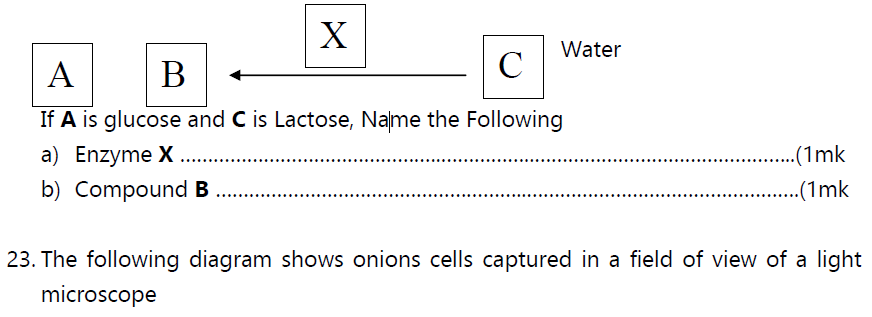
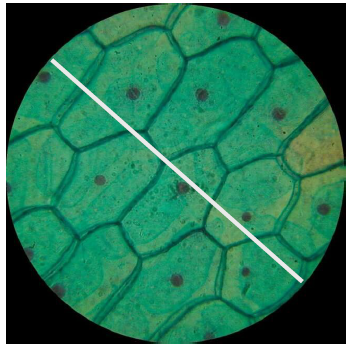
a) Measure the length of the white line to determine the diameter of the field of view in millimeters (1mk
………………………………………………………………………………………………………………………
b) How many cells are found along the diameter represented by the white line? ………………………………………………………………….………………………………..(1mk
c) Determine the actual diameter of one cell if a magnification of X1000 was used to observe the cells above (3mks
d) State a weakness of the process above of estimating cell size (1mk
……………………………………………………………………………………………………………………………………………………………………………………………………………………………………………………
More Examination Papers